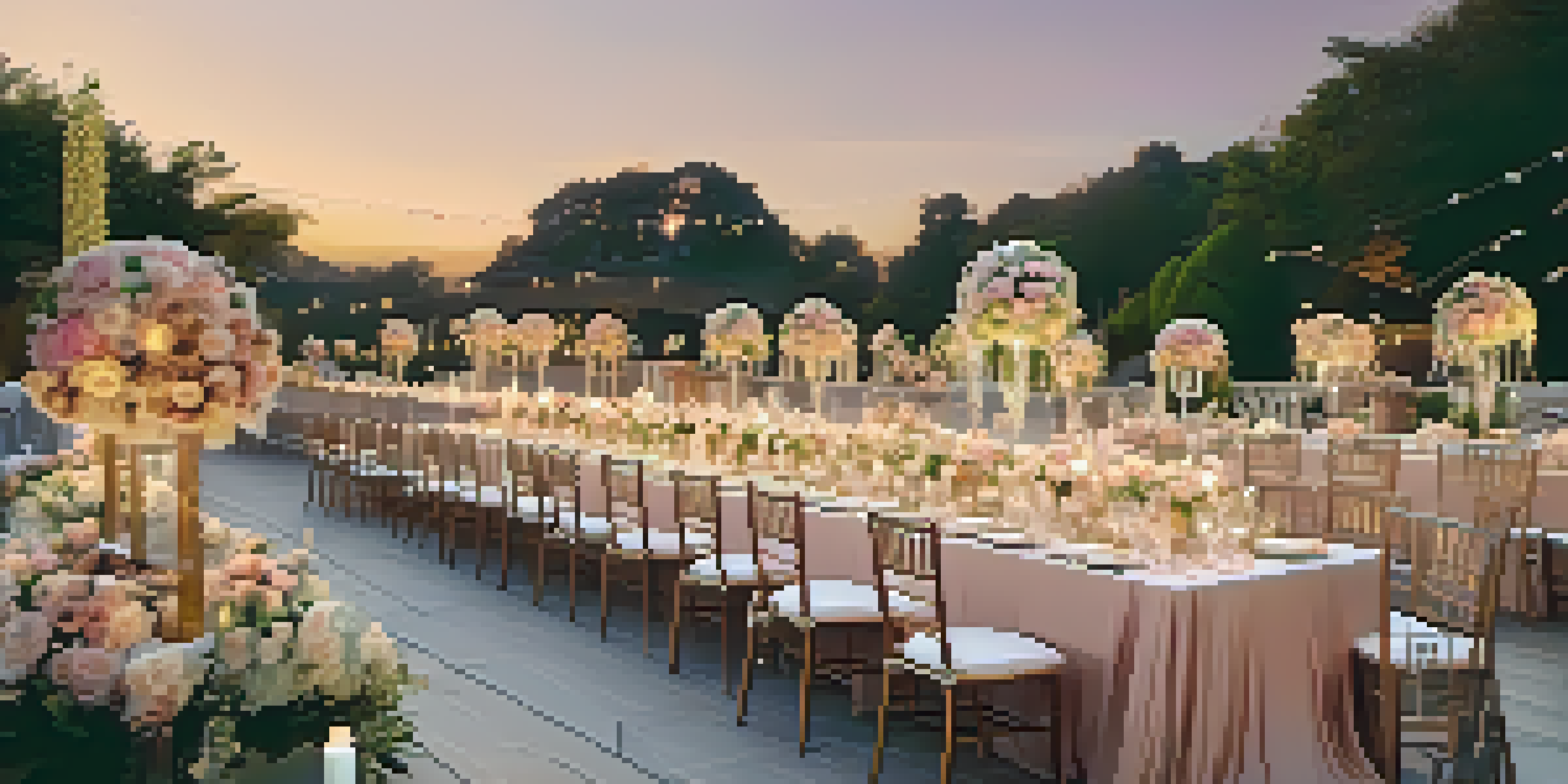Creating a Luxury Photography Portfolio: Best Practices

Understanding the Luxury Photography Market
Before diving into creating your portfolio, it's crucial to understand the luxury photography market. This niche focuses on high-end clients who expect exceptional quality and service. Knowing your audience will help you tailor your work to meet their specific needs and preferences, ensuring your portfolio resonates with them.
Quality is not an act, it is a habit.
Luxury photography encompasses various genres, including weddings, fashion, real estate, and fine art. Each genre has its unique style and expectations. By identifying which area you want to specialize in, you can create a focused portfolio that showcases your strengths and aligns with market demands.
Furthermore, keep an eye on industry trends and competition. Understanding what successful luxury photographers are doing can inspire your own work while helping you identify gaps in the market that you can fill. This knowledge will guide your portfolio's direction and content.
Curating Your Best Work for Maximum Impact
When it comes to building a luxury photography portfolio, quality trumps quantity. Instead of showcasing every single photo you've ever taken, select only your best work. This curated approach allows potential clients to see your skills and style without being overwhelmed by too many images.

Aim for a cohesive theme or aesthetic throughout your portfolio. This could involve using similar color palettes, lighting techniques, or subjects. A unified look not only enhances the visual appeal but also reflects your unique artistic vision, setting you apart from other photographers.
Curate Quality Over Quantity
Select only your best work to create a cohesive and impactful portfolio that reflects your artistic vision.
As you curate, consider the story your portfolio tells. Each image should contribute to a narrative that connects with your audience. This storytelling aspect can evoke emotions and create a memorable experience, making your portfolio more impactful.
Investing in Professional Presentation
The way you present your portfolio can significantly influence how potential clients perceive your work. Investing in high-quality prints, custom albums, or a sleek website can elevate your portfolio from good to outstanding. Remember, luxury clients expect nothing less than perfection in presentation.
Your brand is what other people say about you. It’s what you do, how you do it, and how you communicate your values.
If you're opting for a digital portfolio, ensure your website is user-friendly and visually appealing. Use a clean layout, easy navigation, and high-resolution images to create an immersive experience. Your website should reflect your brand's identity and make a lasting impression on visitors.
Additionally, consider creating a physical portfolio for in-person meetings. A beautifully crafted book can leave a tangible impression that's often more powerful than digital images alone. It allows clients to connect with your work on a personal level, enhancing your chances of securing a booking.
Showcasing a Variety of Styles and Subjects
While it's essential to have a cohesive aesthetic, showcasing a variety of styles and subjects can demonstrate your versatility as a photographer. Luxury clients often seek photographers who can adapt to different scenarios, whether it's capturing a bridal portrait or a high-end product shoot.
Include a mix of images that highlight your ability to work in various environments and lighting conditions. This not only showcases your technical skills but also reassures clients that you can handle any situation that may arise during a shoot.
Understand Your Luxury Market
Grasping the luxury photography market helps tailor your portfolio to meet high-end clients' expectations.
However, be mindful of maintaining a level of consistency in quality. Even within a diverse portfolio, each image should reflect the same high standards that luxury clients expect. Balance is key to ensuring your portfolio appeals to a broad audience while still showcasing your unique style.
Utilizing Client Testimonials and Case Studies
In the luxury photography market, client testimonials can significantly enhance your portfolio. Positive feedback from past clients serves as social proof, showcasing your professionalism and the quality of your work. Including short quotes or testimonials alongside relevant images can help build trust with potential clients.
Consider creating case studies for standout projects. This involves detailing the challenges faced during the shoot, your creative approach, and the final results. Sharing this insight not only highlights your expertise but also allows potential clients to envision the experience of working with you.
Remember, authenticity is key. Genuine testimonials and well-crafted case studies can resonate more strongly than simple marketing claims. Let your past clients' voices add credibility and depth to your portfolio.
Maintaining and Updating Your Portfolio Regularly
A luxury photography portfolio is not a static entity; it requires regular maintenance and updates. As you grow and evolve as a photographer, your portfolio should reflect your latest and best work. Schedule time every few months to review and refresh your content, ensuring it stays relevant and engaging.
Additionally, keep an eye on industry trends and adapt your portfolio accordingly. Incorporating new styles or techniques can demonstrate that you're not only current but also innovative. This proactive approach can attract clients looking for fresh perspectives.
Invest in Professional Presentation
High-quality prints and a well-designed website enhance your portfolio's appeal, aligning with luxury client expectations.
Don't forget to remove older images that no longer represent your current skill level or aesthetic. A streamlined portfolio that showcases your best work will be more impactful than one that includes outdated pieces.
Networking and Leveraging Social Media
In the luxury photography world, networking is just as crucial as your portfolio. Building relationships with other professionals in the industry can lead to valuable referrals and collaborations. Attend events, join relevant groups, and engage with fellow photographers, stylists, and clients to expand your network.
Social media platforms like Instagram and Pinterest are excellent tools for showcasing your work and reaching a broader audience. Share your portfolio images, behind-the-scenes content, and client stories to engage your followers. Consistent posting can help keep your work at the forefront of potential clients' minds.

Remember, authenticity is vital on social media. Engage with your audience by responding to comments and messages, and share your personality along with your work. Building a genuine connection can help you attract luxury clients who resonate with your brand.
Creating a Memorable Brand Identity
Your brand identity plays a significant role in attracting luxury clients. Consider how you want to be perceived in the market and create a cohesive brand image that reflects that. This includes your logo, color scheme, typography, and even the tone of your communication.
A strong brand identity not only helps differentiate you from competitors but also builds recognition and trust. Luxury clients are more likely to choose a photographer whose brand resonates with their own values and aesthetics, so take the time to refine your identity.
Incorporate your brand identity into every aspect of your portfolio, from your website design to your printed materials. Consistency is key, as it reinforces your professionalism and commitment to delivering a high-end experience.